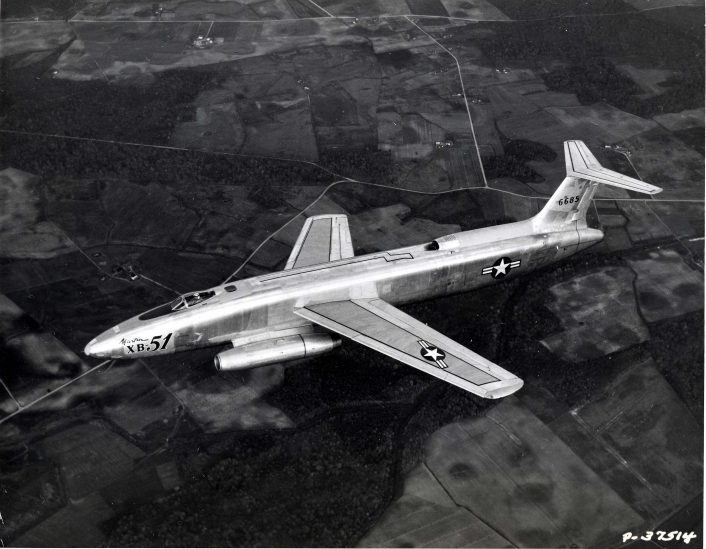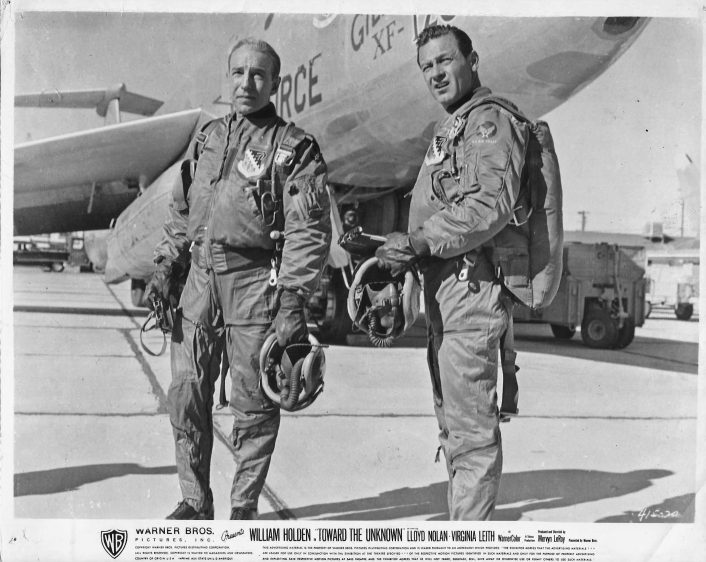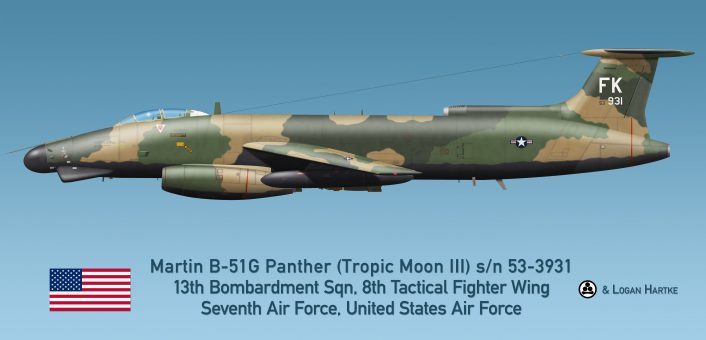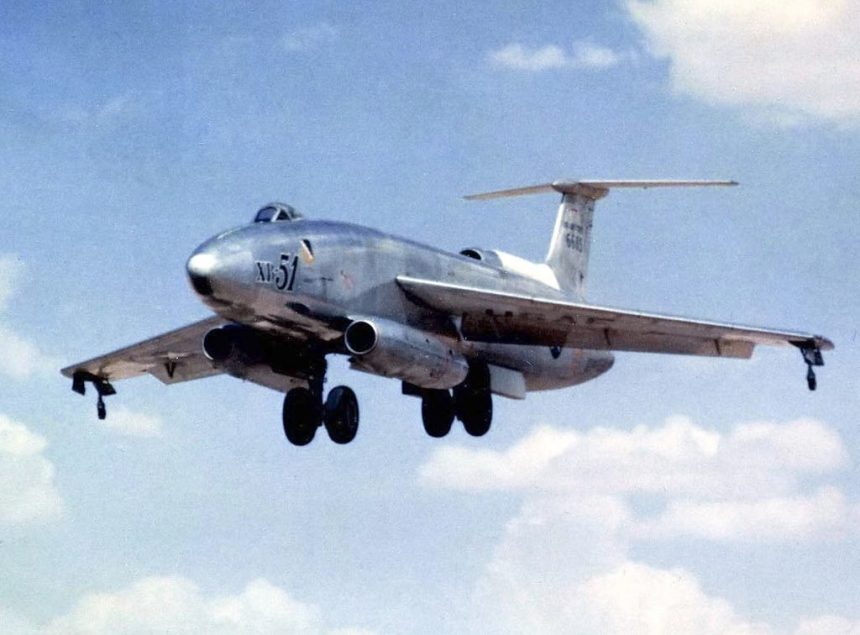The Enigmatic XB-51 Was Ahead of Its Time, and That May Have Ended its Program.
It’s unusual for an airplane to almost completely disappear from history. Especially a pioneering aircraft that emerged at the dawn of a new era with innovative technology. But that has been the fate of the Martin XB-51, an aircraft that dissolved into history and is remembered by only the most esoteric aviation history fans.
Martin’s XB-51 flew for the first time on October 28, 1949. Considering its unconventional and futuristic appearance, it must have been a remarkable event. But very little media of the XB-51 remains to this day relative to other celebrated historic aircraft like the XB-70 Valkyrie. And if you consider that, while more sensational, the XB-70 amounted to a titanic flop, most accounts of the XB-51 flight test program are remembered as predominantly positive.
Why did the fledgling U.S. Air Force abandon the Martin XB-51 after evaluating only two prototypes? There are a number of theories that spin out of the distortions of revisionist history, but the truth is likely more practical and mundane.

(Photo: National Museum of the USAF)
“The XB-51 was designed to perform the tactical interdiction role, and I think it would have done quite well had it been given the chance to operate in that environment. It actually shares a lot of features with the Buccaneer, which RAF Germany used in that very role throughout the 1970s”, said Mr. Logan Hartke, an expert on the XB-51 who, in conjunction with artist Sean Little, has created a number of profile images of what the XB-51 may have looked like had it been adapted by the USAF instead of the B-57 Canberra.
The XB-51 was not designed specifically for a fly-off competition between attack aircraft, but it found itself in that position in 1950 when the USAF issued a requirement for attack aircraft during the Korean war. Both speed of acquisition and cost effectiveness were considerations in the program. While the XB-51 exhibited a long list of innovative and forward thinking technologies that would manifest over the next few decades, it wasn’t right for the Air Force’s acquisition and implementation timing, so it was passed over for the off-the-shelf expediency and convenience of the (then) English Electric B-57 Canberra, built for the USAF under license by Martin Aviation.
The XB-51’s shining moment may have been in the mostly forgotten 1956 Hollywood “B” movie called “Toward the Unknown” from Warner Brothers. The film is remarkably good, and pre-dates a similar plot-line to today’s popular military aviation movies like the 1986 smash, “Top Gun”.
The aerial camera work in “Toward the Unknown” is excellent even by today’s standards, but in 1956, it must have been dazzling. Like the XB-51 itself, while the film was well-done and very advanced, the movie’s timing was off. America was a decade out of WWII and busy turning their attention toward rebuilding its culture and economy in the postwar era as the threat of the Korean conflict and Communist spread emerged. Popular audiences may have been fatigued by military movies and newsreels. In 1956, the hottest movies included the epic, “The Ten Commandments”, “Around the World in 80 Days” and “The King and I”. America wanted escape and fantasy. Aspects of “Toward the Unknown” dealt with the stigma of post-traumatic stress disorder in veterans, a problem the country had yet to fully recognize in mainstream media.

(Photo: Authors private collection)
Author Erik Simonsen, former director of communications for Boeing, has also envisioned an alternate history for the XB-51 and how it could have influenced U.S. air power during the Cold War and into the Vietnam conflict. Simonsen wrote that, “Then- Maj. Charles E. “Chuck” Yeager checked out in the XB-51. A high-time XB-51 test pilot, Yeager flew the high-speed weapons delivery sorties.” Simonsen quoted Yeager as reporting that, “Flying both ships one and two, I never had a hairy moment in the airplane”. Yeager also said the XB-51 was, “Way ahead of its time”.
But Simonsen did find reason for belief in the theories of institutional prejudice against Martin aviation as a contractor to the U.S. Air Force. Simonsen wrote in his excellent book, “U.S. Combat Aircraft Fly-Off Competitions” (Specialty Press, 2016) that, “With the Martin Company also producing aircraft for the U.S. Navy, some individuals felt that Glen Martin had favored the Navy during the highly charged Congressional budget battle that pitted aircraft carriers against the USAF/Convair B-36 heavy bomber. In the opinion of some, this may have hindered Martin as an air force customer during the critical selection process.”

Only those privileged to the internal workings of the XB-51 development program and the attack aircraft acquisition process in 1950 know the facts of why the XB-51 faded into obscurity. And, there may be no single person who knew the entire story behind the aircraft’s banishment to history’s obscure.
As if scripted in a book or movie, both XB-51 prototypes were destroyed in crashes the Air Force attributed to pilot error. One surviving film of an XB-51 prototype crashing on take-off shows the aircraft failing to gain lift at the critical moment, then settling into a grinding impact that took the lives of both pilots. The other XB-51 crash happened away from cameras, and few witnesses have offered accounts. One aviation museum out west has a few fragments of crash debris from one of the crashes, but other than grainy film, one really great Hollywood movie, and a lot of black and white photos, that is all that remains of this obscure and remarkably advanced aircraft. And that is kind of a shame.









